So, what should I say? Genious and madness lie close together. In other words: the PPG Wave 2.3/2.3 synthesizers can be seen either as a benefit or a disaster. You decide whether they are a problem or a source of musical enrichment.
“You haven’t met their predecessors yet :-) … wait until you play a Wave 2 or Wavecomputer 360 … benefit- and hazard-tendencies are even a lot higher! If PPG wouldn’t have closed its doors, I think they might have released the Wave 3 around 1988, with a realistic user-interface, 16 MHz-68000-processor, 16bit-converter etc. … the basic features Palm already implemented quite well in other instruments (Waveterm B, PRK-FD, HDU).”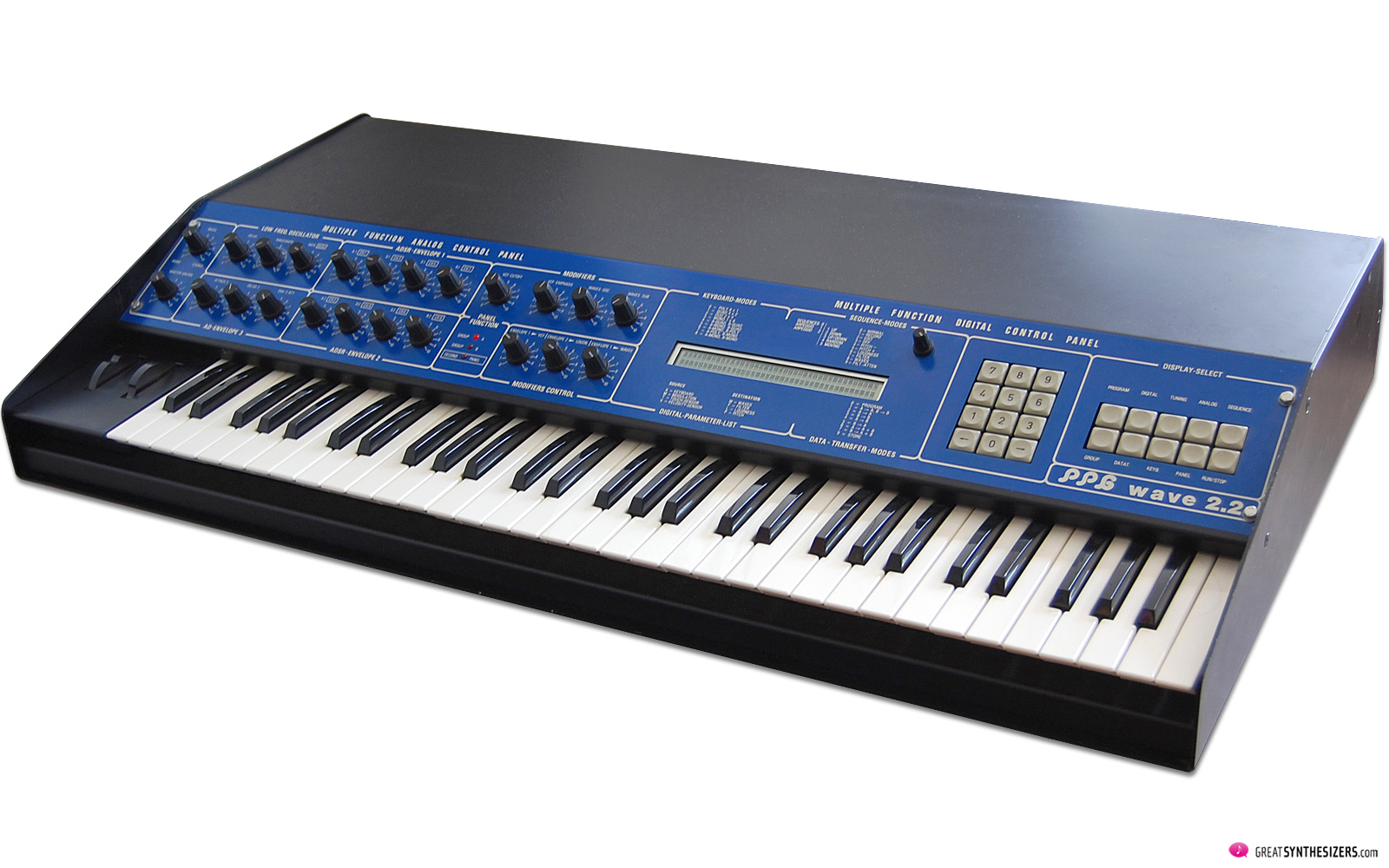
Concept
Wave 2.2/2.3 are hybrid synthesizers (digital controlled instruments with – in this case – analog filters). They offer 8 voices with 2 oscillators each. The OSC themselves feature not only ordinary waveforms such as saw, pulse, etc., but complete wavetables. There are 32 of them are at your disposal, each consisting of 64 waveforms. Running through the wavetables generates the typical PPG-sound – full of dynamic and unusual musical textures.
The wavetable-concept was extremely unusual when developed and released end of the 70s, beginning of the 80s. Even today, the PPG Wave-instruments are exotic synthesizers, since 90% of all synthesizer concepts utilize the callsic samples or waveforms to build up their sounds.
Featuring real analog filters, PPG Wave 2.2/2.3 are capable of surprisingly warm sounds. However, the overall character of the instruments either digital, or a mixture of both analog and digital.
One crucial point is the user-interface. The general concept is interesting: a mixture of analog parts (very nice knobs!) with digital controls. Most programming will be done via the digital key pads. This is the point where things get weird: if you step through a page with the > key, there’s an end to the menue. Hit > once more and you’re at the beginning again (now activating the preset number, which is always in first place).
Ok so far. Now press < once more to get back to the end of the page (let’s imagine you simply forgot to do a little programming) – oh dear, it doesn’t work! Instead, you have to press > another 10 (12?) times, jumping all the way to the one feature (at the end of the page) you want to programme. Not really intuitive, honestly.
The Pro’s
Those PPG sounds created with well-programmed wavetable-modulation-routings are just brilliant! Controlling the instrument via MIDI offers additional possibilities, as the computer might control pitch-wheel-data and other modulation source adjustments, influencing the wavetables while you turn and push the buttons and controls.
The knob labelled MONO-STEREO (sitting next to the volume-control) is another wonderful musical feature. STEREO is sort of a ping-pong-mode. I really love the sound of this true-stereo-effect. By the way: the glorious Elka Synthex is capable of a similar feature. If you play a single sound in STEREO-position, the voices are positioned independently in the stereo-image. Wonderful …
Controlling Wave 2.2/2.3 via MIDI is (more or less) no problem! Not to be taken granted with an instrument of that age. Hermann Seib improved the Operation System (last version: 8.3), so implementing this software might not be a bad idea.
The filter sounds brilliant! It’s the famous SSM2044 – not suprisingly, the tonal quality is excellent. Filter resonance is especially gorgeous. There are not too many synthesizers with such powerful (razor-sharp?) resonance. Sequential Prophet-5, Crumar Trilogy and Wave 2.2/2.3 come to my mind …
Another important aspect: ultra-fast envelopes. They really sound meaty with their aggressive attacks. Together with the analog filter, you end up with some totally analog sounds. Remember: (digital) wavetables are the instrument’s sonical basis. Just imagine how powerful the PPG Wave can sound with ultra-fast envelopes and analog filters.
The TUNING System, another highlight, allows you to tune each voice separately (!) … This can be done with the 10 (calculator-type) keys, or directly, with the keyboard. The lowest key has the number 0, the highst the number 60. A few examples:
All voices set to +1 octave:
- 12 12 12 12 12 12 12 12
All voices set to +5 octaves:
- 60 60 60 60 60 60 60 60
Alternating octaves:
- 00 24 12 24 48 00 36 12
Crazy, atonal stuff:
- 24 13 07 26 12 35 22 59
I like the atonal idea a lot. Open the TUNING page, move the cursor to voice 1, then hit 8 different keys (black and white keys) all across the keyboard – and that’s it! You’ve programmed the PPG Wave into a totally non-harmonic, weird scale. Keep on playing – those atonal results will surprise you!
(Total) TUNE = 440Hz is to be found on the main page. The display shows the current PROG number, the selected WAVETB, the active MIDI channel, DTF (DataTransFer – codeword for the internal Dataflow), SPLIT, KEYB (Mode), TTUNE, CASS and – last but not least – the current OS: PPG-WAVE 2.2 V8. As you see, PPG means lots (!) of numbers and abbreviations.
Minuses of Wave 2.2/2.3
The keyboard is clunky, hard to play, no fun … A keyboard upgrade might help remedy the disaster. This can be a rather simple upgrade, with wire, glue and felt. But it helps to equal the independant key’s height, and to stop clunky noises (created by worn-out rubber inside the keys).
Ah yes … don’t panic: When using aftertouch, the whole (!) keyboard moves down … quite unusual, as the keys wobble up and down all the time when playing.
Wave 2.2 / 2.3 each offer a vast row of connections. I never have been successful controlling the instrument via CV/Gate (analog sequencer). Going through the user’s manual you think “wow, that’s the perfect synthesizer” – but in reality many features don’t really work out that well. (Since MIDI works perfectly, this is no real problem. However, in my experience, working with analog sequencers is far more creative than sitting in front of a computer trying to bring out those shuffling arpeggios …). CV/Gate has never worked on my PPG.
All wavetables (64 waveforms: 0 to 63) end with the same classic waveforms:
- 60: triangle
- 61: pulse
- 62: rectangular
- 63: sawtooth
Sadly, these waveforms DO NOT fit to the rest of the wavetable, musically speaking. Usually you have very soft, round, organ-like waveforms. And you glide through the waves manually, or with the help of a modulation source.
Everything is perfect until wave no. 60 turns up and destroys the mellow, smooth sound-scape … it’s totally frustrating, as you have to figure out the perfect modulation depth ending below these classic waveforms, below no. 60. That’s only possibly with trial and error (there is no other way) and costs a lot of time and energy to get those smooth wavegliding sound you’re looking for.
The LFO is unusual, too. It’s not capable of producing a simple (yet “clean”) vibrato – no way! It cycles periodically, but every now and then it loses timing. As if it was drunk …
Operation System 8.3
PPG Guru Herman Seib has made many improvements on the PPG operating system during the last decades. The latest version OS 8.3, available at Virtual Music, is highly recommendable.
“V8.3 is the consistent development by Hermann Seib of his successful V8.0. Like V8.0, the new V8.3 system offers comprehensive SysEx support which allows saving your own sounds via MIDI to an external computer device. Formerly this was only possible with an expensive Waveterm computer device. Via MIDI SysEx datagrams the PPG synthesizer will communicate with an external MIDI library, like the Emagic SoundDiver.
Additionally our current V8.3 system convinces with many new and helpful functions, removes annoying problems of the old PPG system V6.0 and offers an improved MIDI timing.
Performance features of V8.3 – the evolution from V6.0 / V8.0
- Comfortable handling of the extensive V8.0 SysEx functions directly accessable form the PPG panel
- Accelerated MIDI timing due of improved MIDI code
- ANALOG-panel shows the value of the modulation wheel; essential for sound programming experts
- Extended V8.0 SysEx implementation for storing sounds on an external computer device
- PPG bus emulation over the MIDI interface; for PPG extremists and future applications
- During the boot process the display shows the version and serial number
- Extended user´s manual with new “quick start guide”
Additionally, V8.3 improves the program code of the old official PPG release V6.0 and removes engraving software bugs:
- Arpeggiator bug of Wave 2.3 solved
- Initialisation problem of the Upper Wavetable solved
- Correction of the defective waveforms in Wavetable 13
- Several minor bug fixes (Sequencer quantization, arpeggiator mode, etc.)
(Source: www.virtual-music.at/en/ppg-zone)
The PPG synthesizers today
Wave 2.2 / 2.3 synthesizers have been always luxury instruments, expensive to buy, long-winded to operate, and unpredictable. Anyway, you can make much more radical timbre changes using PPG-style wavetable synthesis than with purely analog (or purely digital) techniques. That’s the good point.
In fact, Wave 2.2/2.3 are lovely instruments – if you’re patient, willing to accept some minor software bugs and (possibly) irritating user-interface stuff. Understanding and – more important – accepting the instrument’s peculiarities will take some time, but your reward will be unique musical experiences.
Today (as of 2021), however, original PPG synthesizers are hardly affordable. PPG Wave 2.2 / 2.3 instruments are now listed for around 10,000 Euros / USD or more. A lot of money when you keep in mind that these instruments are not very reliable in any way …
Modern alternatives
In today’s market, quite a few instruments offer PPG-like synthesis techniques. First, there’s that whole bunch of Waldorf synthesizers: Microwave, Wave, Blofeld, etc. Second, those (vintage) Ensoniq synthesizers (VFX, SD-1, etc.) allow waveform modulation – with similar results as the PPG. Third, John Bowen’s Solaris synthesizer contains the vast Waldorf wavetable engine. Fourth, Studiologic Sledge. Fifth, Modal Argon8.
Sixth, there’s the unique MonoWave synthesizer (designed by Paula Maddox).
Hermann Seib:
“The MonoWave … well, this is a little bit different – actually it’s no real wavetable-synth. But it offers 256 different waveforms that can be controlled via MIDI (not via envelope, lfo etc. as on the original PPGs). Nevertheless it sounds brilliant!”
The MonoWave, now called MonoWave(X), is available again – see www.elby-designs.com for details.
Dozens of synthesizers offer wavetable synthesis these days. They are usually great instruments, most of them powerful machines in their very own way. But, interestingly enough, none sounds like a PPG Wave.
PPG Wave 2.2 / 2.3
Polyphonic Analog/Digital Synthesizer
8 Voices
Download:
PPG Wave 2.2 Photo (3400×2200 px)
Links:
Wolfgang Palm
Hermann Seib
Virtual Music (PPG Service)
Elby Designs (MonoWave)
www.vintagesynth.com/misc/wave.php
https://en.wikipedia.org/wiki/PPG_Wave
Youtube:
(Marko Ettlich)
(Torsten Abel)

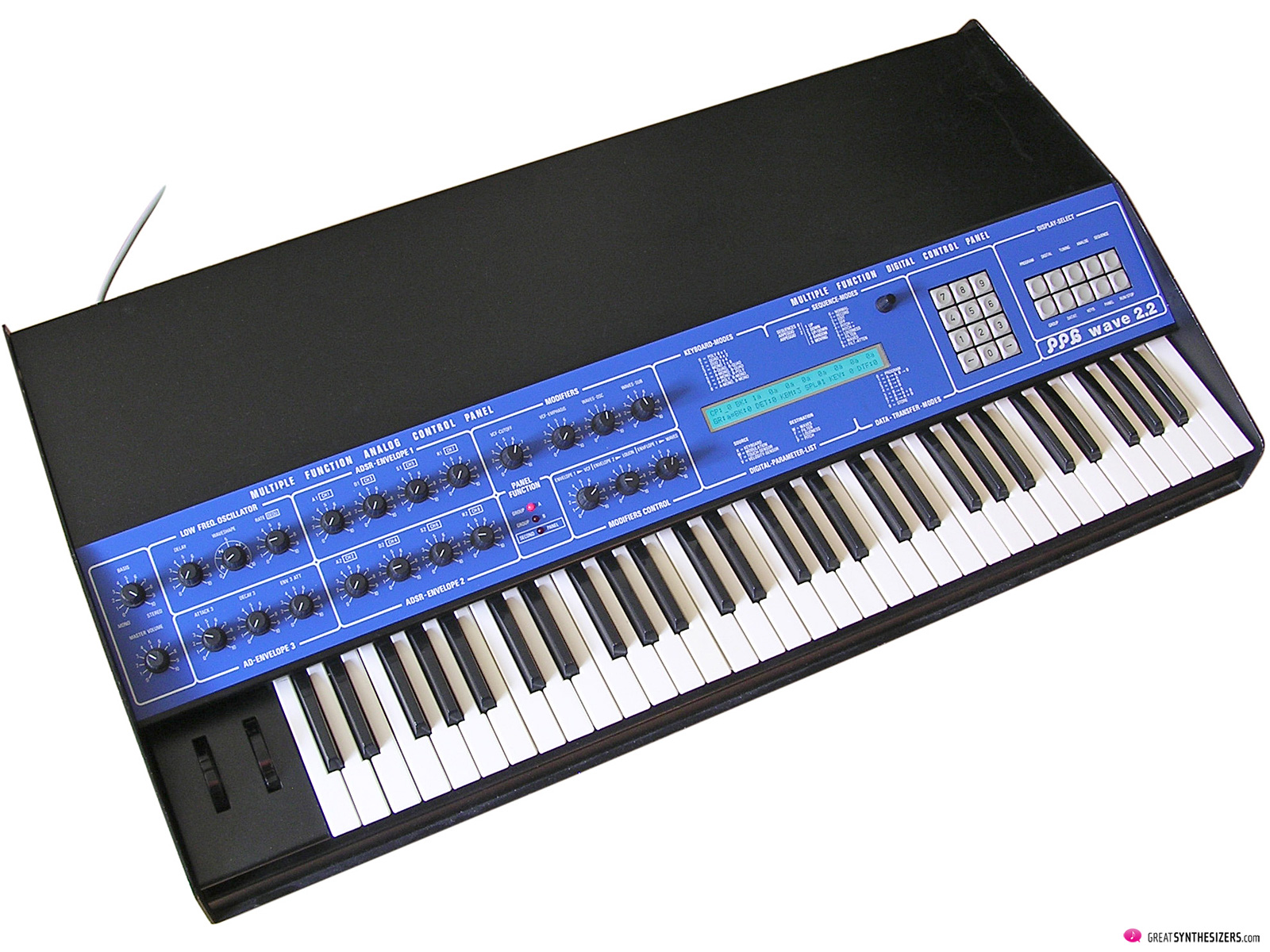
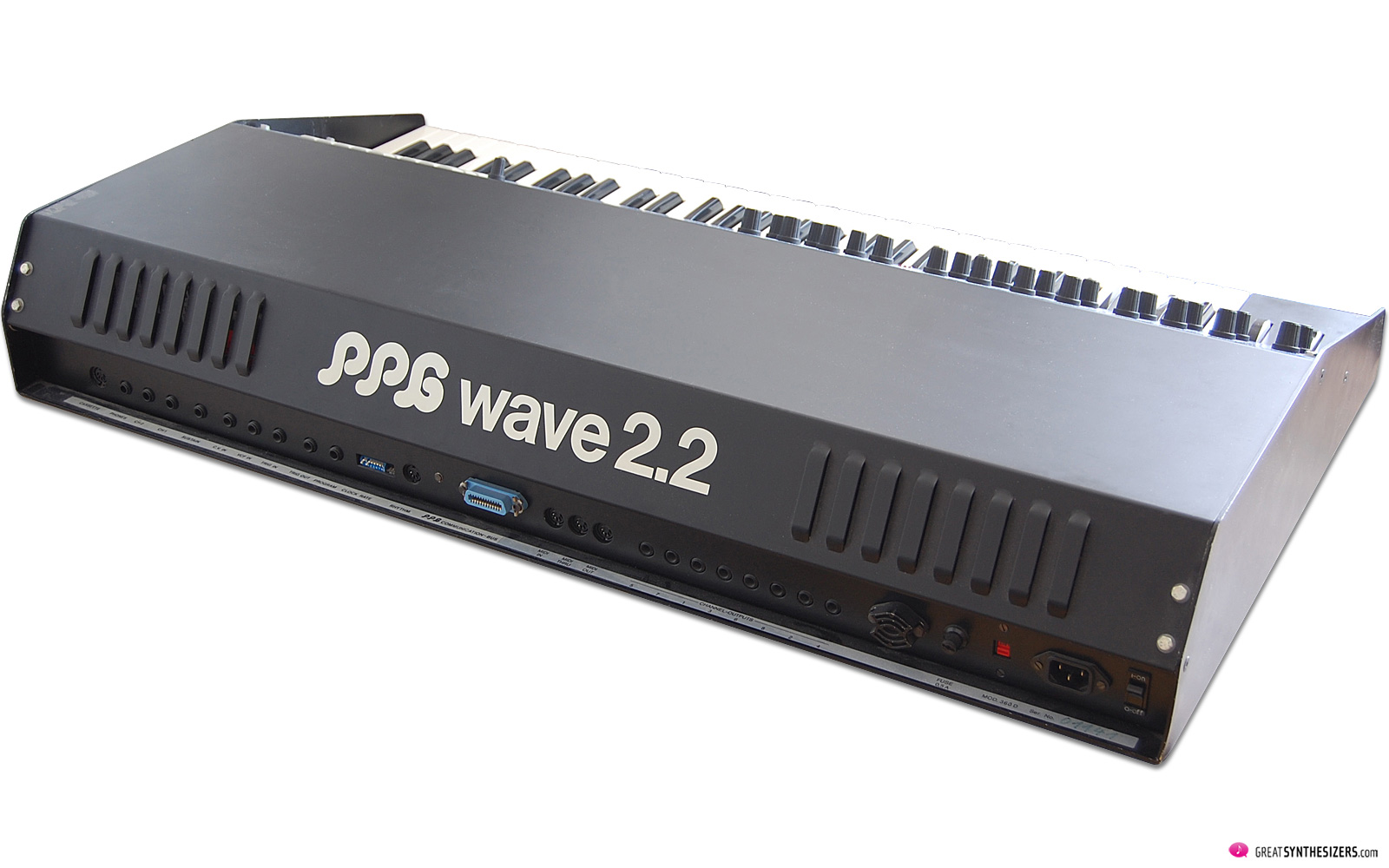
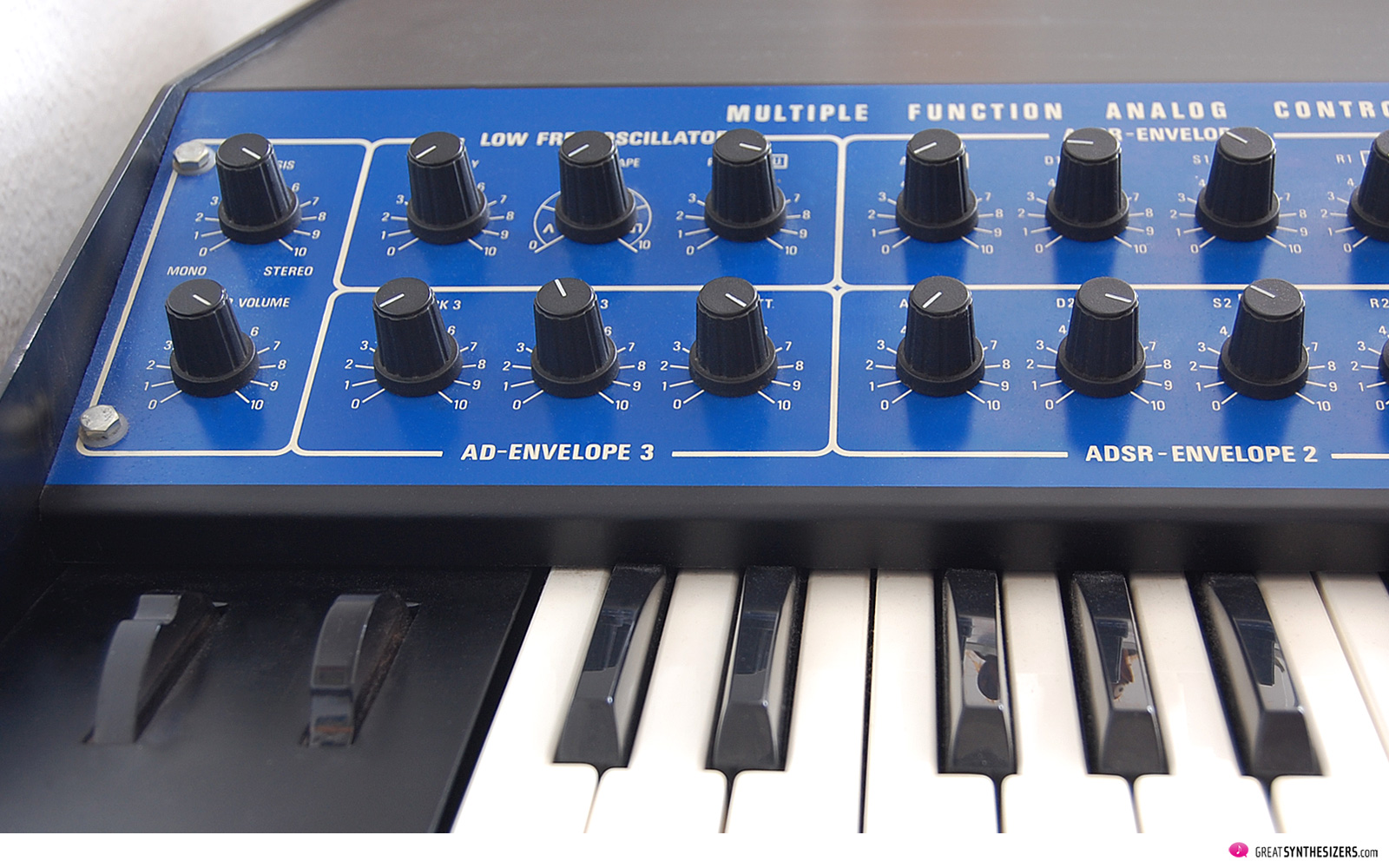
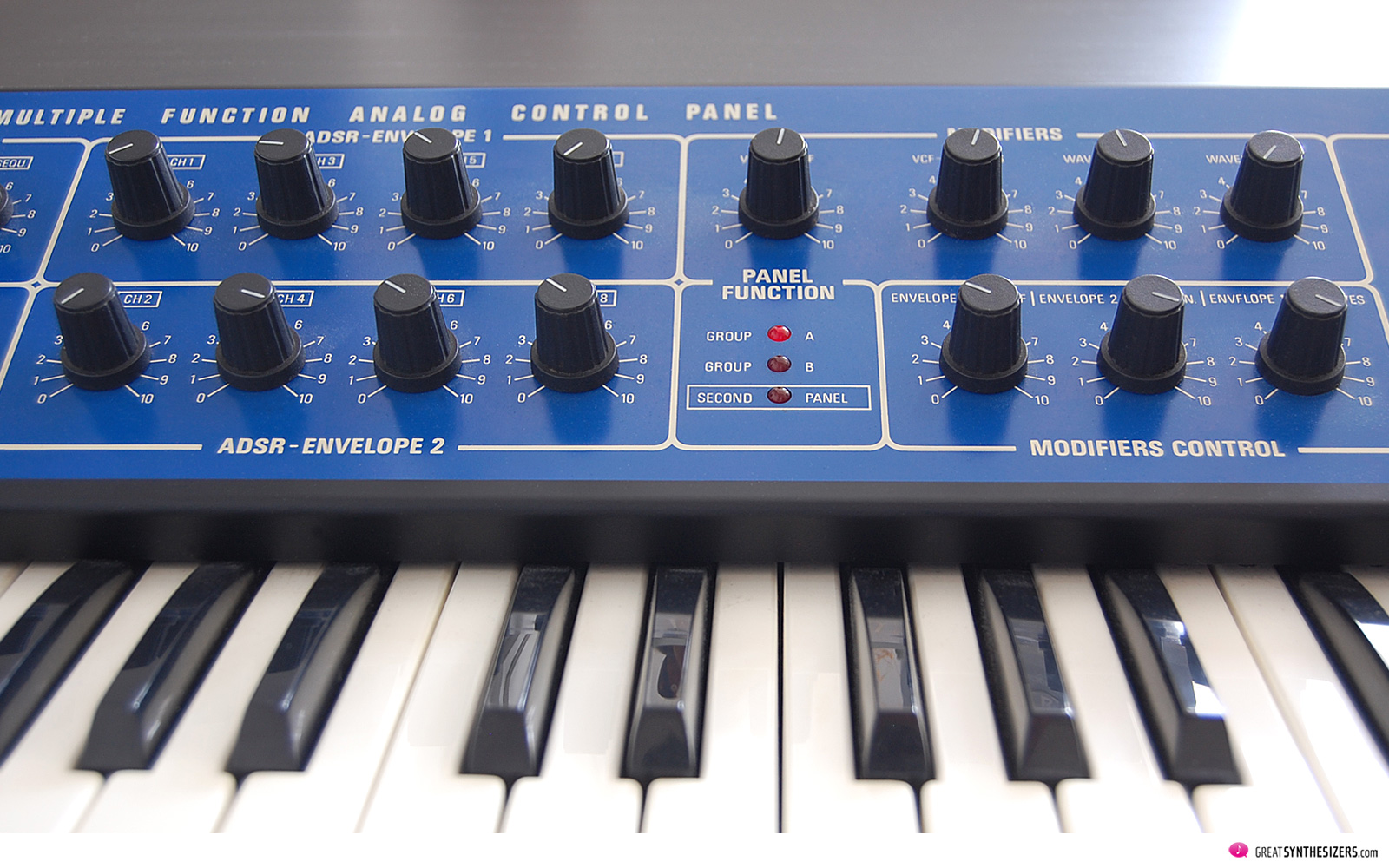


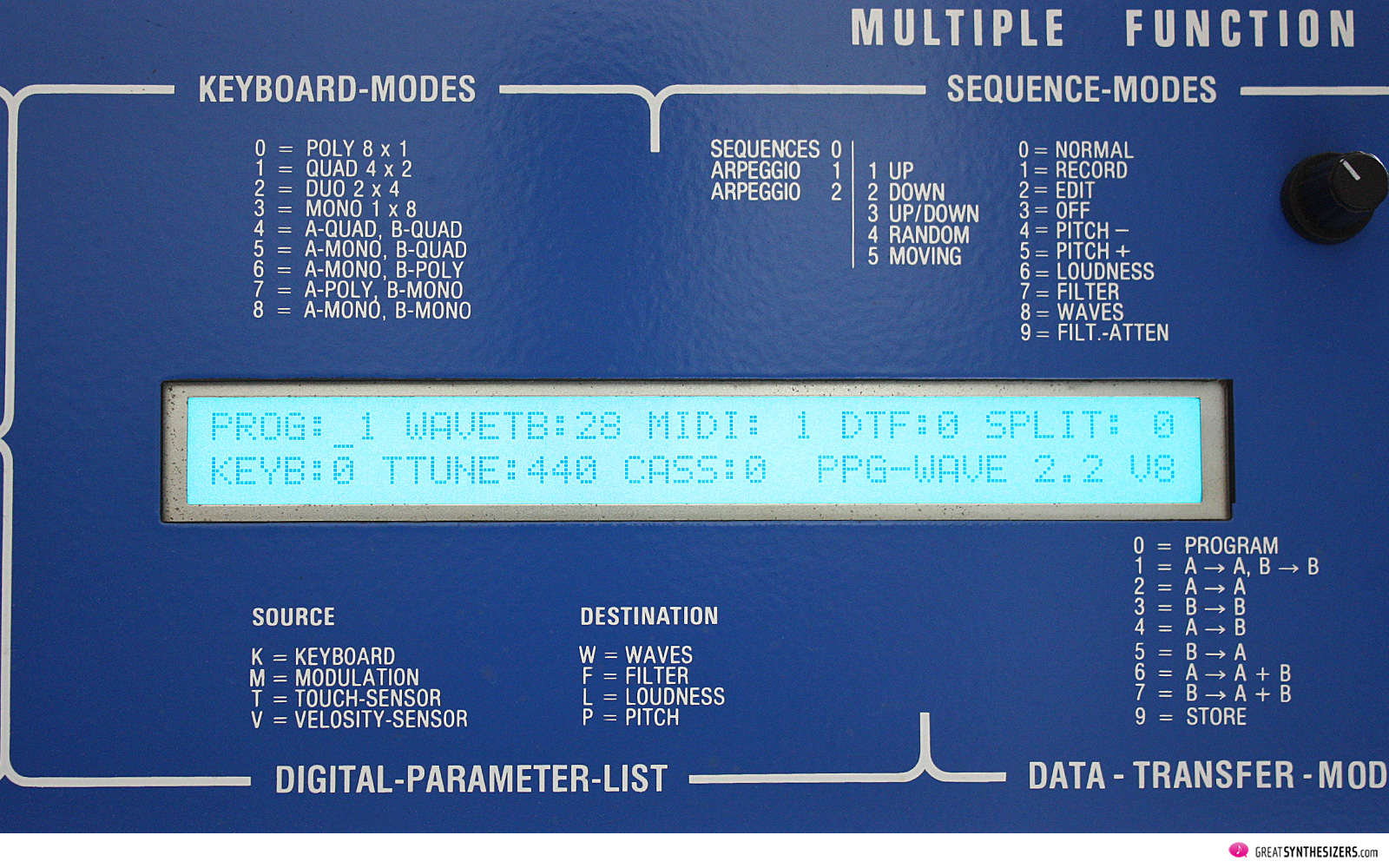
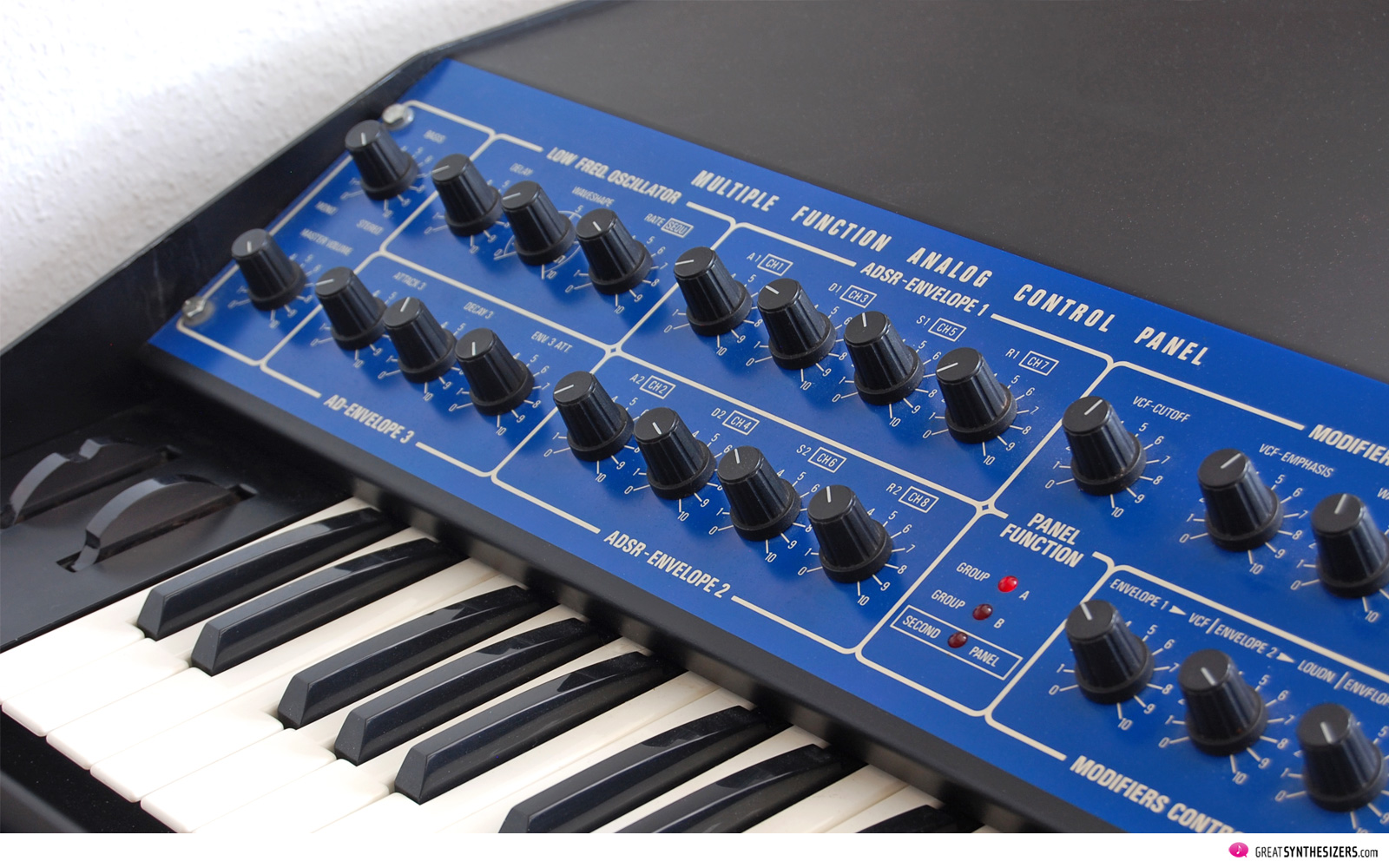
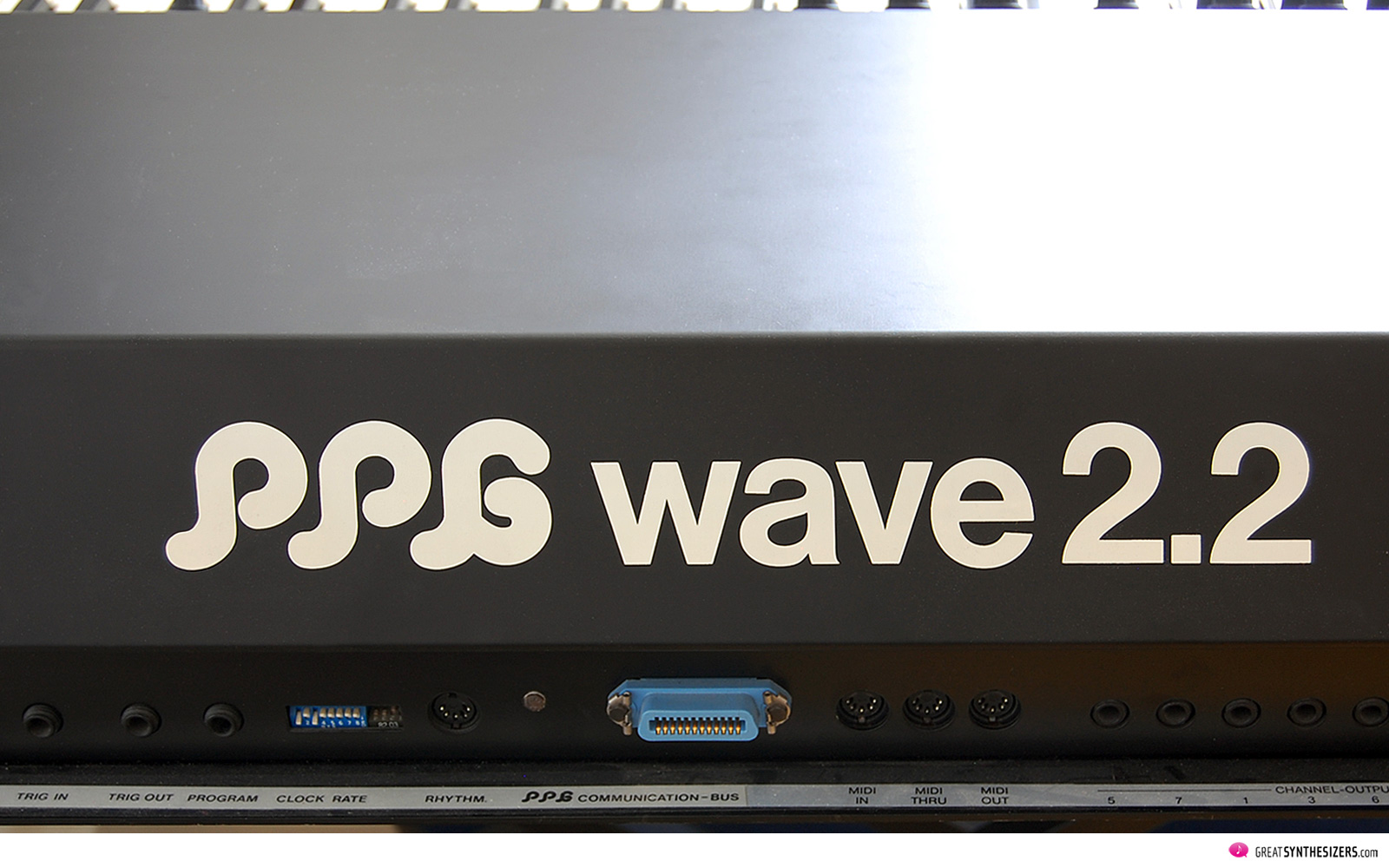
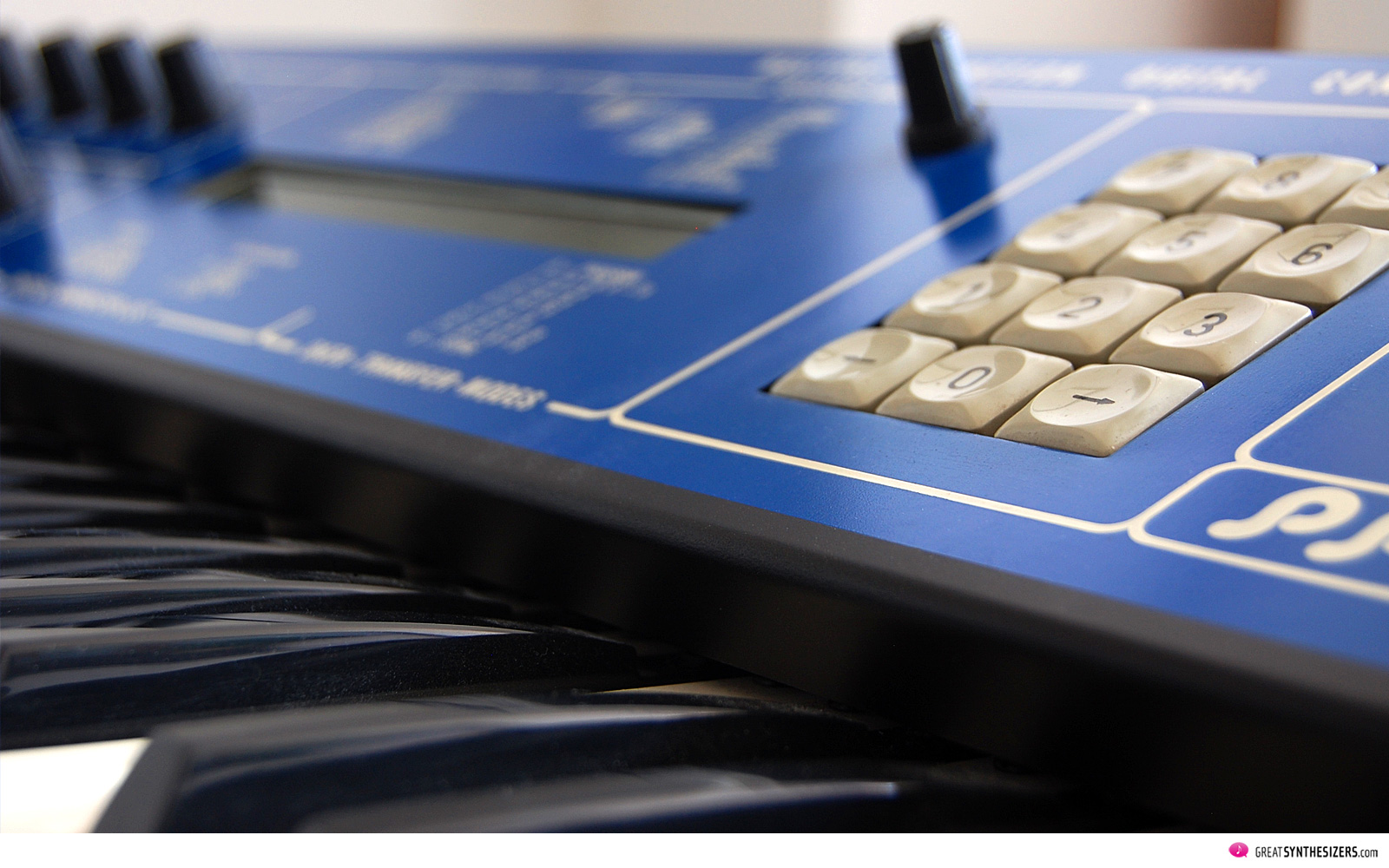

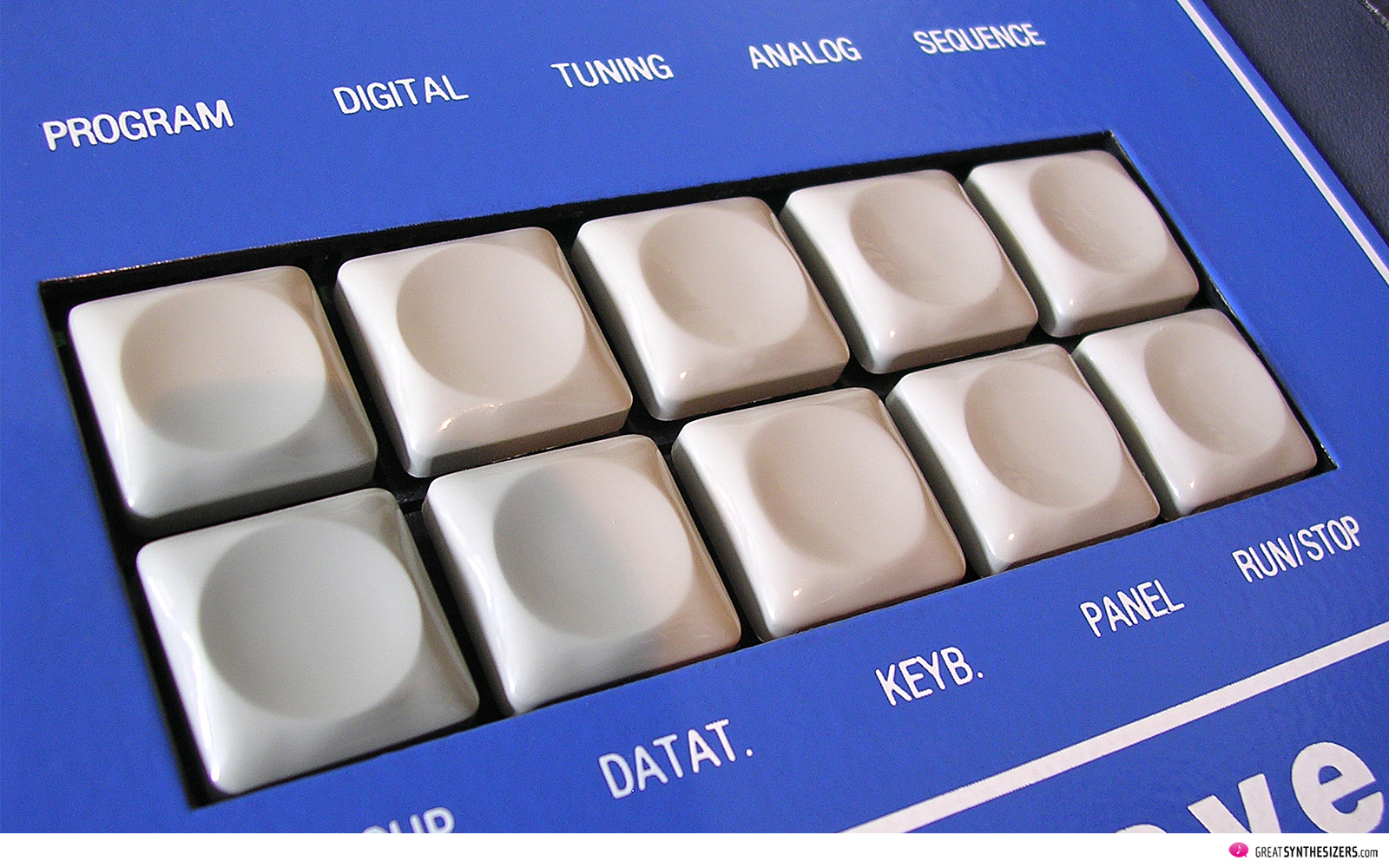
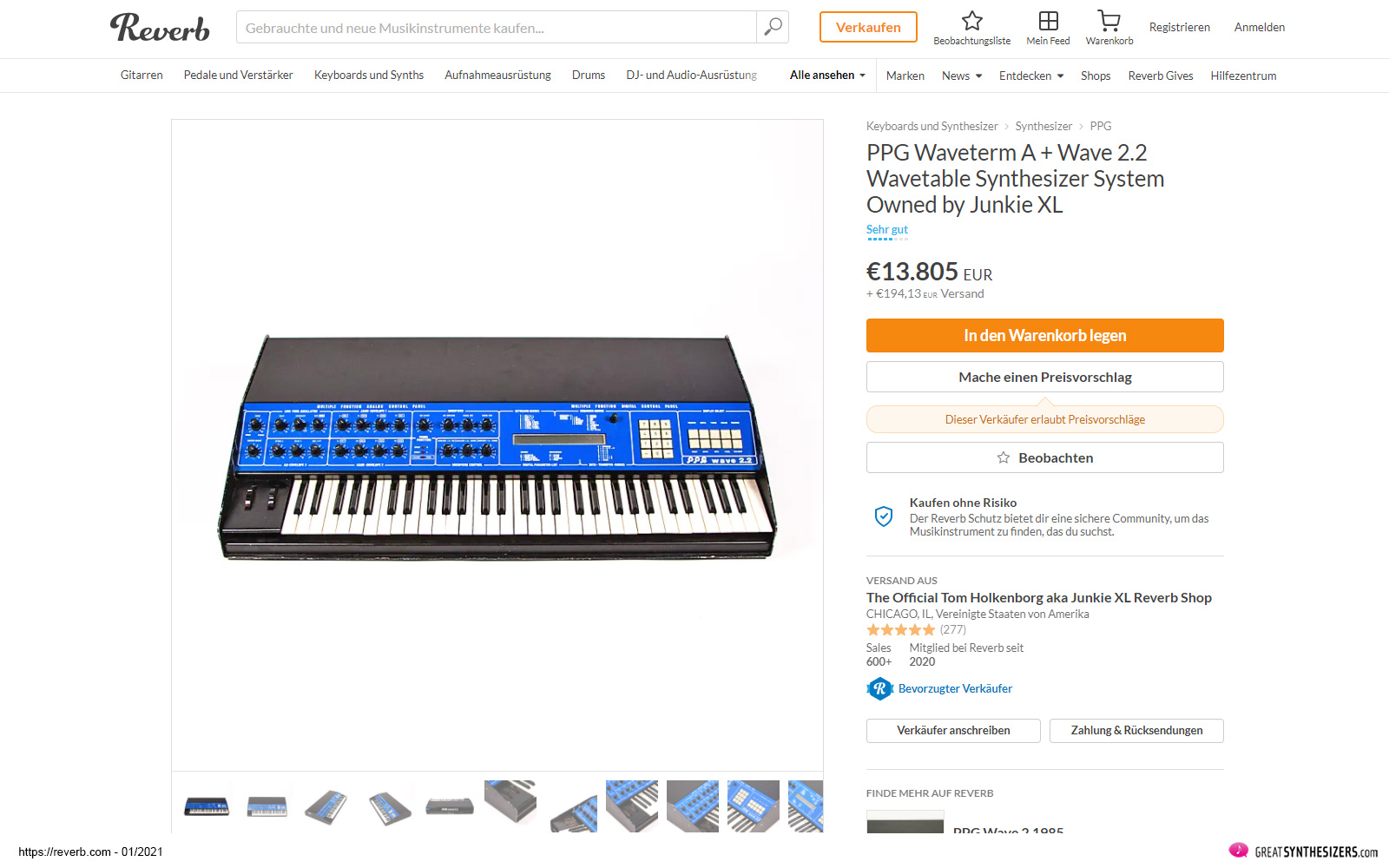
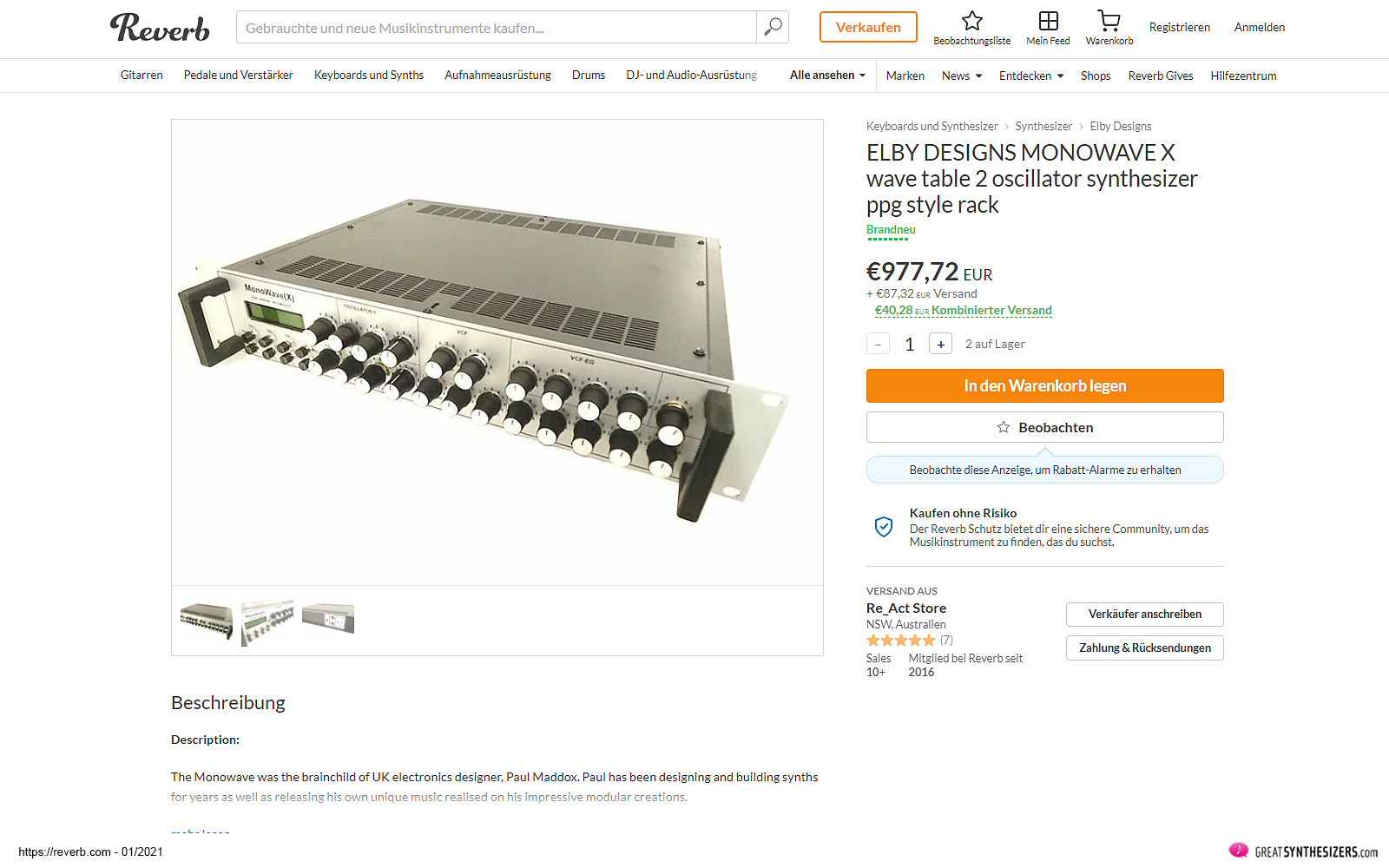
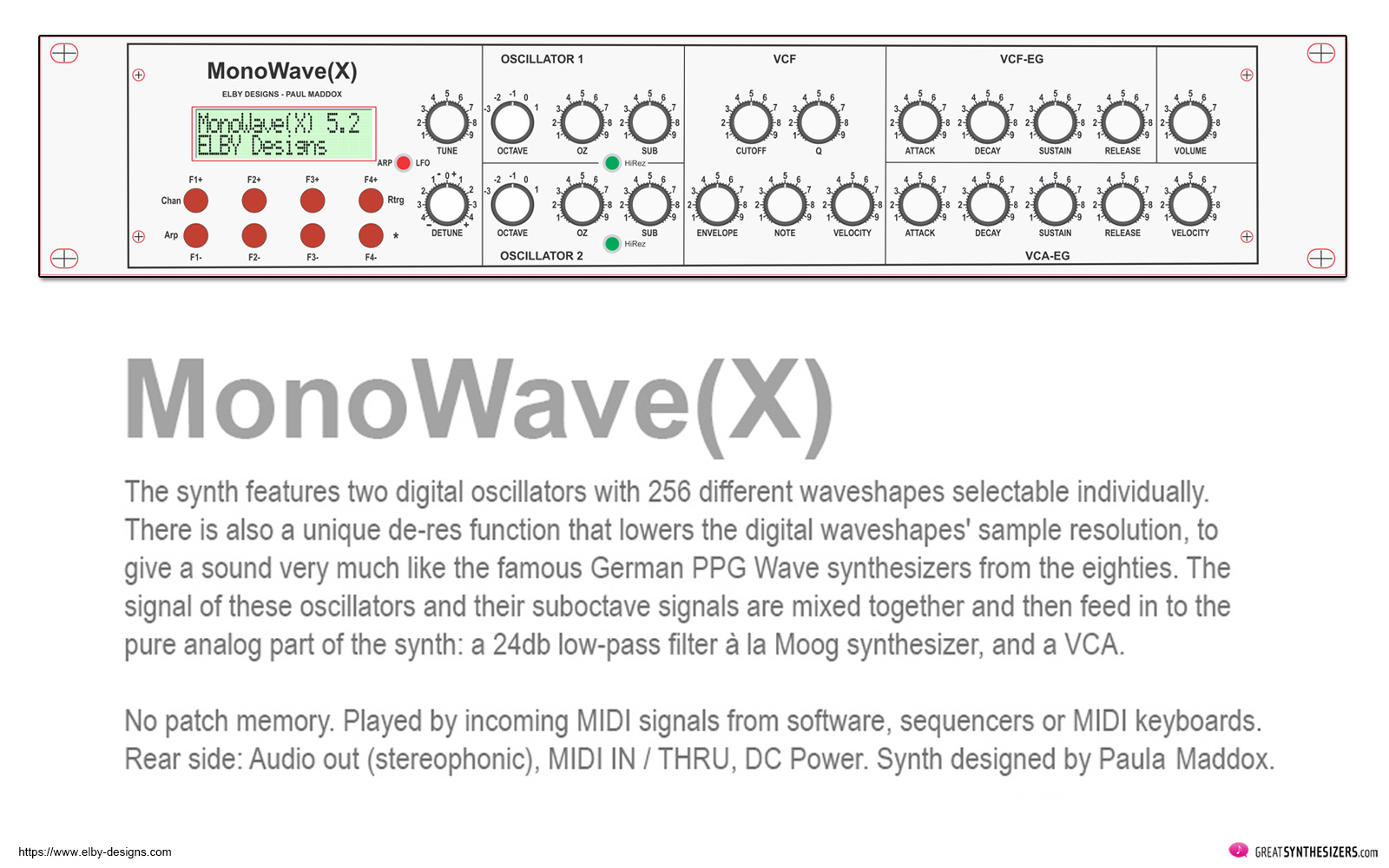

There is only one wavetable synth and that is PPG. I wish i knew something about electronics, i would have build a pc into an vintage midi controller, with some usb/midi controllers and design a front like the PPG Wave and have a PPG diy Wave full with vst’s including several PPG Wave plugins.
It is one of the most iconic instruments ever.
I totally agree …
Thank you very much for an eye opening article and for ear opening stunning demos of these majestic machines.
I have loved digital synthesizers my entire life and the PPGs truly sound unique still to this day.
Little did I know as a kid visiting the old Second Hand Music store in Stockholm, Sweden, in the late 80s, where they had a PPG 2.2 for years!
I couldn’t get a proper signal to my headphones so I just thought it was a strange old boring behemoth in a landscape where any Yamaha DX model would be much more interesting. Embarrassing to admit really.
If I could back to my younger self I would have gotten the PPG at once – and I think I would have gotten it for around 300 euros or less. Mindblowing.
Anyway; now I know what to sample into Mimic when Reason 12 drops!
Those are some GREAT audio examples. It’s almost too bad they are buried at the end of the article… Thanks for sharing!
[…] November 2, 2023 andy PPG Wave 2.2 / Wave 2.3 – the one and only […]